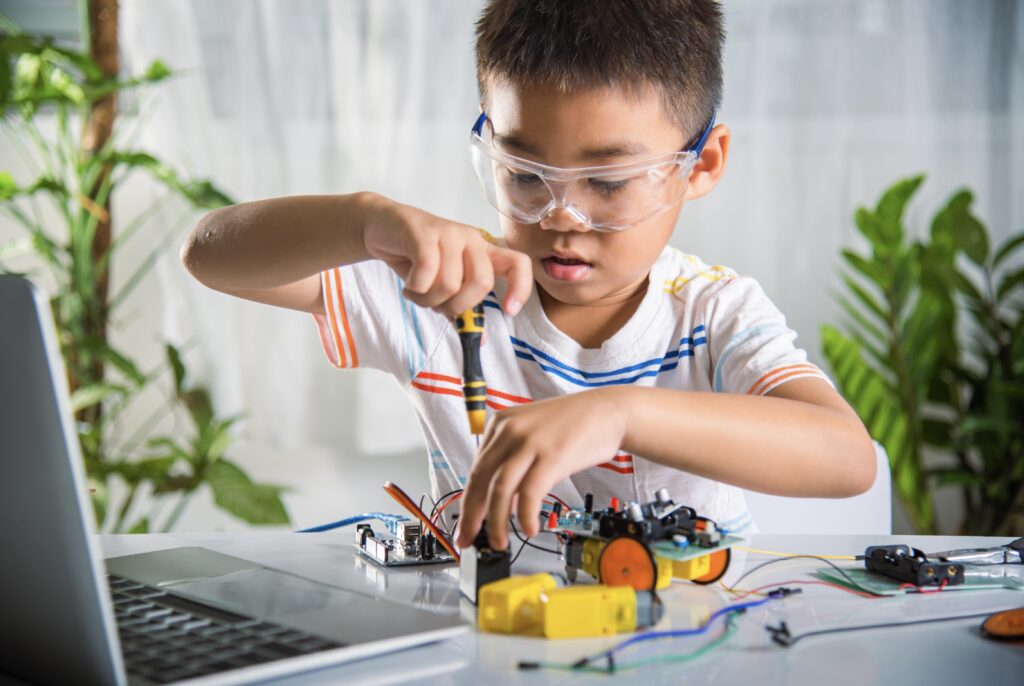Why STEAM Education Needs an Update
Technology is changing fast. From AI to robotics, these tools are now part of our everyday lives. But teaching kids to code or build robots isn’t enough anymore. We also need to help them develop skills like critical thinking, teamwork, and adaptability. This blog explores how to update STEAM education so it prepares students for a world shaped by technology.
What STEAM Education Looks Like Today
Many schools focus heavily on technical skills. Students learn coding, robotics, and how to use digital tools. These lessons are important, and schools have invested in labs, software, and teacher training.
However, this technical focus often overlooks other important skills. Students also need to learn how to solve problems, think critically, and work in teams. These skills matter just as much in modern jobs as technical knowledge does.
Also, technology changes quickly. What students learn today could become outdated in a few years. This is why they must also learn how to learn. A strong STEAM program should teach students how to keep up with new information and tools.
Some schools are starting to use project-based learning to fix this gap. These projects help students apply their technical skills while working on real-world problems. This kind of learning builds both hard and soft skills.
In short, STEAM education needs to go beyond just teaching tech. It should prepare students to think, adapt, and work with others—skills they’ll need for their future careers.
Key Skills for a Tech-Based Future
As technology becomes more common, students need more than just tech skills. They need a mix of problem-solving, communication, collaboration, critical thinking, and creativity. Let’s break down why these skills are important:
- Problem-solving: Helps students work through complex challenges using logic and creativity.
- Communication: Students need to explain their ideas clearly and understand others.
- Teamwork: Most jobs require working with others, so students must learn to cooperate and share tasks.
- Critical thinking: Helps students make good decisions based on evidence and facts.
- Creativity: Encourages new ideas and unique solutions in tech and science.
These skills allow students to use technology in smart ways and help them become future leaders in tech.
How to Teach Soft Skills Through STEAM
Adding soft skills to STEAM programs doesn’t mean removing technical content. It means creating learning environments that include both. Here’s how:
- Hands-on learning: Projects like coding a robot or designing a bridge let students apply technical knowledge and practice teamwork.
- Real-world tasks: Give students projects that solve everyday problems. This builds communication, planning, and leadership skills.
- Group activities: Let students work in teams. They’ll learn how to manage time, divide tasks, and listen to each other.
- Reflection: After a project, ask students what worked, what didn’t, and how they can improve next time.
These strategies make STEAM lessons more useful and relevant to future work environments.
The Role of Lifelong Learning and Adaptability
One of the most important things students need is the ability to keep learning. In tech, things change fast. Being adaptable means students can stay up to date and ready for new tools or methods.
STEAM education should encourage students to explore new topics on their own. It should also give them access to a wide range of tools—from basic coding software to AI platforms.
Project-based learning also supports adaptability. When students face new problems during a project, they learn how to adjust and try different solutions. This builds resilience and prepares them for real-life situations.
How The Brain Academy Supports Modern STEAM Learning
The Brain Academy is a learning centre that supports STEAM learning from ages 3 to 18. It offers learning kits and toys that help students build both technical and soft skills. These tools are used in classrooms and at home.
Younger kids start with simple coding games, while older students can build full robots. Along the way, they learn how to work in teams, solve problems, and think creatively.
Lessons at The Brain Academy focuses on helping students grow over time. As they move through different age levels, the activities become more challenging, but they also continue to teach the same core life skills.
Why It Matters
STEAM education should help students succeed in the future. This means teaching more than just coding and science. It also means helping students become strong thinkers, good teammates, and flexible learners.
WhalesBot is one of the few STEAM education tools that supports this full approach. It gives students the technical skills they need, but also helps them build the soft skills required to lead in a tech-driven world.
To prepare kids for the future, we must improve STEAM education by combining technical and soft skills. The Brain Academy can help. Educators, parents, and schools should work together to create programs that prepare students to not only use technology but also shape its future.

